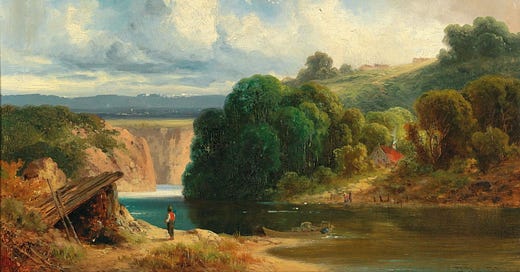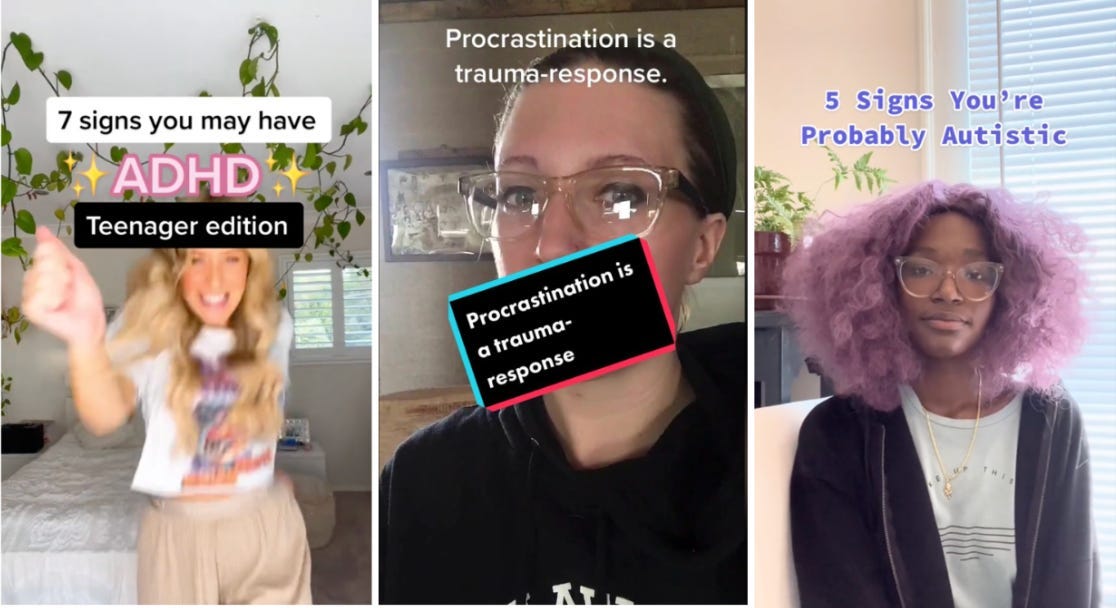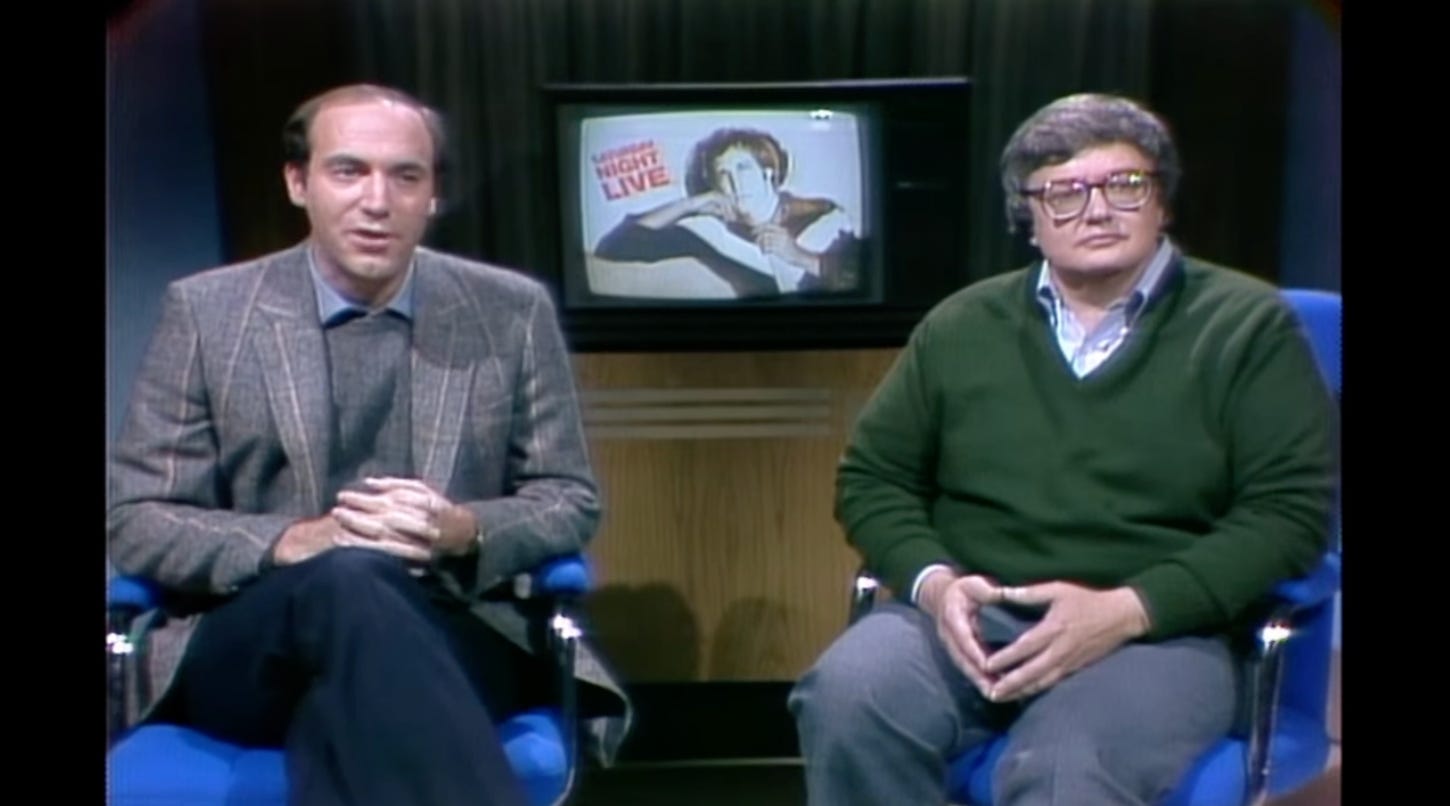Hello and welcome to another edition of Substack Reads. This week, Hollywood historian and rom-com connoisseur Erin Carlson looks back on the period that defined Meg Ryan’s career, Freya India speaks for her generation on algorithms, Katie Heindl’s labyrinthitis provides a fresh lens on NBA commissioner Adam Silver’s regrets, and Substack’s Stone Club takes a trip to County Antrim, Northern Ireland. Let’s get into it!
FAITH
The temptation of Thielism
The billionaire investor sees the apocalypse coming. Whether that’s a good or bad thing depends on your tolerance for excitement, writes author Tara Isabella Burton
—
inPeter Thiel thinks we should all be less worried about the apocalypse. In a November 3 speech, given at the Novitate Conference commemorating the birth of the French philosopher René Girard, the influential billionaire investor painted a portrait of the end of human existence at once terrifying and, in Thiel’s highly aestheticized telling, more than a little tantalizing. Condemning our present “zombie period” of neoliberal modernity as a “low testosterone world” of dysfunctional “modern gender dynamics” and nihilistic solipsism of “amus[ing] ourselves with memes and TikTok videos,” Thiel offered listeners another option.
Reject the “peace and safety of the Antichrist”—which for Thiel means a “one-world totalitarian state”—in favor of “nihilistic action.” Peppering his speech, titled “Nihilism Is Not Enough,” with references as wide-ranging as sixteenth-century English scientist Francis Bacon to the controversial Weimar-era political theorist Carl Schmitt, Thiel concluded in a bombastic vision of cosmic collapse: “Silence has descended upon the earth as if an angel were about to open the seventh and last seal of an apocalypse.”
FILM
How Meg Ryan embraced the rom-com box
As Meg Ryan’s first romantic comedy in years hit theaters this week, author and Hollywood historian Erin Carlson looks back on the period in Ryan’s career when she succumbed to the ingénue roles that defined her, now as leading actor, director, and writer
—
in
“She seemed like somebody you might know who just happened to be very beautiful—and idiosyncratic at the same time,” [director John Patrick] Shanley said of Meg, telling me that he extended an offer right away. “And she took the weekend, I remember. Because there was another role that she kind of wanted to play, which was a very dark role. And that was always the thing with Meg, that here she was projecting this incredible, luminous, well-adjusted, ‘I love life’ persona. But inside she also was really aspiring to be edgy, and be dark. And thought that that side of her had not gotten its day in court. When her manager, I think it was, told me she was struggling over whether to do this or—I think it was Jacob’s Ladder—I just basically thought she was crazy. And I was deeply alarmed. Not that it meant something negative about her but that she might, in her aspiration to do something edgy and dark, choose this other film.”
MENTAL HEALTH
Algorithms hijacked my generation
Recognized by author as a “voice of Gen Z,” Freya India explains how algorithms act as conveyor belts, transporting girls to dark and extreme places
—
in , a cross-post fromAnd where have we ended up? With genuine conversations about mental health cheapened, monetized, and often trivialized into TikTok trends and fashion accessories. With pre-teens making mental illness the core of their identity. With some teenage girls picking up tics from Tourette’s influencers; kids self-diagnosing with dissociative identity disorders; and young women calling antidepressants “hot girl pills” and putting them in cute candy dispensers. With a #mentalhealth hashtag on TikTok with over 110 billion views, and millions in my generation taking medication for their deteriorating mental health.
This is not to say that all of these trends can be explained by algorithms. But the conveyor belt phenomenon can help us better understand Gen Z and, particularly, why everything feels so extreme. It’s our looks. Our mental health. Our sexuality. Our politics. Some kids go from watching wholesome “What I Eat In A Day!” videos to being served pro-anorexia content to watching skeletal influencers like Eugenia Cooney starve themselves on Twitch.
PHILOSOPHY
Humanism and the conversation of the ages
Psychology academic Cody Kommers speaks to Sarah Bakewell about her book At the Existentialist Café and surveys 700 years of humanist thought, focusing on the ophthalmologist Ludwik Zamenhof
—
inAs far as invented languages go, Esperanto has enjoyed more success than most. You can study it on Duolingo. It’s a staple of popular culture; for example, I recently saw it in an episode of the TV show Billions, where it is being learned by the character Michael Wagner. But mostly, this success has been on the linguistic front. People find the language interesting. But it hasn’t been especially useful as a basis for utopia.
In a way, Zamenhof’s Esperanto is a microcosm of the system of values more generally known as “humanism.” There are many shades of humanism, but at their core lies a belief that understanding, connection, and even mutual admiration among different kinds of people is not only possible but paramount to a meaningful life. If we could all converse with one another, understand one another—then maybe we’d stand a chance of constructing the kind of society we all want to live in.
TELEVISION
The untouchable charm of Siskel & Ebert
Siskel & Ebert obsessive Will Leitch recalls a golden age of American TV
—
in , recommended byI’d argue what the book does that’s most important is that it reminds us that “Siskel & Ebert,” before it was anything else, was a very smart show. This was not a program that featured Mario Lopez complimenting celebrities’ tans, or otherwise aimed for the lowest common denominator. “Siskel & Ebert” simply featured just two untelegenic guys sitting in chairs and talking to each other. But it became a hit. And it became a hit because it never once talked down to its audience, and because it focused exclusively on what it thought was important—what people needed to know about. Ebert often wrote that he considered his job simply one of journalism, that he was just a guy on the movie beat, and the show reflects that: Two intelligent reporters who have their beat down cold and, and this is key, love that beat—and want you to love it too. This was a nationally syndicated show, one you could watch in South Dakota and Louisiana and Alaska, that would spend half an hour talking about obscure Swedish films and not apologize for it one whit.
Oh, and it helped that they could be very, very funny.
SPORTS
The dizzying softness of Adam Silver’s regrets
Writer Katie Heindl’s labyrinthitis provides a fresh lens on NBA commissioner Adam Silver’s regrets
—
inThe most illuminating thing to Silver—the Silver slipping his role, existing for glimpsing seconds between Silver as commissioner, Silver as executive, Silver as basketball fan—came when he talked about mistakes and regret. He said he marvelled at people who could straight-faced say they didn’t have any regrets, that he himself had so many. It was manifold, that mistakes and regrets were inevitable and it came down to what you did with them. The example given in the interview was the team selection for the All-Star Game going back to East vs. West, but for a second the soft core of what was being said was there, vulnerable, bright, dizzying.
What I’d want to ask would be where the more substantial regrets are. Not that it’s boring or whatever to watch adult men pick each other to respective teams in a process that takes way too long, but what he’s got wrong in the league’s most callous examples of stubbornly insisting basketball, as its centre, is all that’s ever mattered. But of course the reason there wouldn’t, couldn’t, be an answer, is because to admit those mistakes would be admitting that they weren’t aberrations at all. They were essential to basketball, to what we value.
FOOD
Mile-high apple pie
Paris Starn delivers detail on a classic, with high effort-to-reward ratio, making this recipe one the passionate baker turns to annually
—
inAt this point your apples should be cool. working a big spoonful at a time, pile the apples into the dough, packing tightly and being sure to avoid gaps. about a 1/2” from the lip of the pie pan begin piling the apples just in the center, we need to leave some room at the edge to emphasize the dome shape and seal the dough so liquid doesn’t leak out as much. continue piling and shaping into a dome using all your apples.
Place the other dough you rolled out on top of the apples and, working from the top, begin to gently shape the dough around the dome trying to smooth out any wrinkles. once you have reached the base of the dome the top dough should be touching the bottom dough. press down where the two doughs meet with the sides of your hands to seal the two crusts together.
FIRST-PERSON
How I met your mother
In a letter to his newborn son, Marc Typo recalls a sliding doors moment that changed his life
—
in22 Weeks Old
Dear Myles,
“It is a truth universally acknowledged, that a single man in possession of a good fortune, must be in want of a wife…” That’s the furthest I ever read in Pride and Prejudice—sorry, Ms. Austen. But it must be universally acknowledged that when I met your mother eight years ago, I was still living with your grandmother, just finished my master’s, and was about to start my first year of teaching high school in NYC. I had no good fortune, just suffered a massive heartbreak seven months prior, and was definitely not in search of a wife. I was outside—IYKYK.
I was walking down the stairs of the Utica A train platform in Bed-Stuy, Brooklyn, after getting a haircut, and I was feeling good. The kind of good I told you about before when a Black man gets a haircut.
Your mother stood almost at the end of the platform. I caught only a glimpse of her face as she peeked, checking if the train was approaching.
ARCHAEOLOGY
The Holestone of County Antrim
The Stone Club share their November stone of the month: the Holestone
—
inRecently launched
Coming soon!
Congrats to the following writer on his journey toward publication.
celebrates two literary agent offers:New & noteworthy
Seven food writers on Substack took part in a Thanksgiving hotline answering all your questions, including how to bring back holiday sparkle:
Catch up here:
Writers all over the world met up in person this week:
Including in Scotland:
Inspired by the writers featured in Substack Reads? Writing on your own Substack is just a few clicks away:
Substack Reads is a weekly roundup of writing, ideas, art, and audio from the world of Substack. Posts are recommended by staff and readers, and curated and edited from Substack’s U.K. outpost by Hannah Ray.
Got a Substack post to recommend? Tell us about it in the comments.




























Thanks for the shoutout! A wild two weeks to be sure, and my successful agent search was undoubtedly made possible by the relationships I've built using this platform. Big ups to Substack and everyone who's supported me on this journey!
came here to post a dumb joke but honestly I am just floored at the stable of ridiculously talented people writing very interesting shit that I genuinely want to read. this is, as the kids say, tubular.
also specifically big ups to Marc for being featured that dude rules and Amran for the shoutout that dude also rules everyone rules no one drools